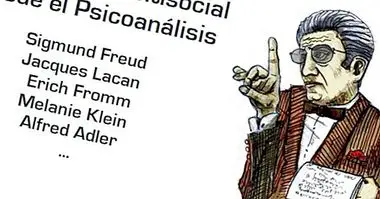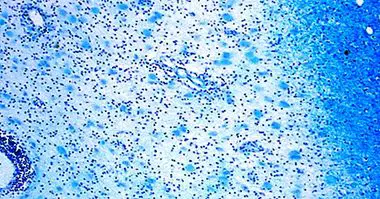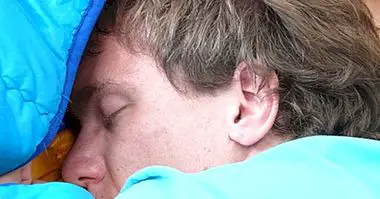Social functioning in schizophrenia: 4 instruments for evaluation
Schizophrenia affects many aspects of people's lives, as it is related to a distortion of the way in which reality is perceived.
One of the dimensions of quality of life that are depleted is what is known as social functioning.
What is social functioning?
Social functioning consists of the ability of the person to adapt to their social environment and their demands . This term refers to the ability to relate to other people, as well as to maintain these relationships, enjoy free time, take care of ourselves and be able to develop the roles that society expects from us.
In the spectrum disorders of schizophrenia, the deterioration of social functioning is a central aspect of the problem and can be detected in the early stages of the course of the disorder. In addition, this phenomenon persists even when the acute phase of the phenomenon has been overcome. On the other hand, the literature shows how certain factors present in patients with disorders of the spectrum of schizophrenia, such as childhood trauma, negative symptoms or certain personality traits, accentuate this deficit in social functioning.
Evaluating social functioning in schizophrenia
It is therefore clear that adequately assessing the social functioning of patients with schizophrenia spectrum disorders is of great importance, since thus the most effective treatments can be provided for the specific situation of each patient .
But not only is it necessary to evaluate effectively the deterioration of social functioning at the level of clinical practice, it is also for research in this area and thus to understand in depth what are the factors and mechanisms that intervene and modulate this deterioration .
The psychometric tools
For this evaluation there are psychometric tools, such as questionnaires or interviews, which help both the clinician and the researcher to know the degree of deficit in the social functioning of patients.
Here we will name four of the most used instruments and we will review their characteristics , (both its structure and its psychometric characteristics). All of them have been adapted to Spanish and validated in people with schizophrenia spectrum disorders.
1. Scale of social and personal functioning (PSP)
This scale developed by Morosini, Magliano, Brambilla, Ugolini, and Pioli (2000) evaluates four areas of patient's social functioning : a) self-care; b) usual social activities; c) personal and social relationships; and d) disruptive and aggressive behavior. It is scored by the clinician and includes a semi-structured interview to help obtain good information on each of the areas.
On this scale the 4 areas are scored using a Likert scale of 6 points, ranging from 1 (absent) to 6 (very serious) . Scores are obtained in each of the 4 areas, in such a way that the highest scores indicate a worse performance, and an overall score of the scale in which the highest values reflect a better personal and social functioning.
The Spanish version of this instrument, developed by Garcia-Portilla et al., (2011), presents an internal consistency of 0.87 and a test-retest reliability of 0.98. So it is a valid and reliable instrument to measure social functioning in patients with schizophrenia.
2. Social Functioning Scale (SFS)
The scale developed by Birchwood, Smith, Cochrane, Wetton, and Copestake (1990) evaluates social functioning in the last three months of the patient's life with spectrum disorders of schizophrenia, and can be administered in the form of a self-reported questionnaire or a semi-structured interview.
It consists of 78 items where seven subscales are measured: isolation, interpersonal behavior, prosocial activities, free time, independence-competence, independence-execution and employment-occupation. The Spanish version of Torres y Olivares (2005) presents high alpha coefficients (between 0.69 and 0.80), making it a valid, reliable and sensitive instrument.
3. Quality of life scale (QLS)
It is a semi-structured interview that contains 21 items, with a Likert scale of 7 points. It was developed by Heinrichs, Hanlon, and Carpenter (1984) and evaluates 4 areas: a) intrapsychic functions; b) interpersonal relationships; c) instrumental role; and d) use of common objects and daily activities.
This scale it is used both to measure the quality of life of patients, as well as the socio-labor functioning . The Spanish version adapted by Rodríguez, Soler, Rodríguez M., Jarne Esparcia, and Miarons, (1995) is a valid tool, with a high internal consistency (0.963) and reliable.
4. WHO Disability Assessment Questionnaire (WHO-DAS-II)
This questionnaire, with different versions (36, 12 and 5 items), evaluates different areas of operation: understanding and communication with the world , ability to manage oneself in the environment, personal care, relationship with other people, activities of daily life and participation in society.
Developed by Vázquez-Barquero et al., (2000), its usefulness, validity and reliability were later corroborated in patients with schizophrenia spectrum disorders by Guilera et al., (2012)
Bibliographic references:
- Birchwood, M., Smith, J., Cochrane, R., Wetton, S., & Copestake, S. (1990). The Social Functioning Scale. The development and validation of a new scale of social adjustment for use in family intervention programs with schizophrenic patients. The British Journal of Psychiatry: The Journal of Mental Science, 157, pp. 853 - 859. Retrieved from //www.ncbi.nlm.nih.gov/pubmed/2289094
- Garcia-Portilla, M. P., Saiz, P. A., Bousoño, M., Bascaran, M. T., Guzman-Quilo, C., & Bobes, J. (2011). Validation of the Spanish version of the Personal and Social Functioning scale in outpatients with stable or unstable schizophrenia. Journal of Psychiatry and Mental Health, 4 (1), pp. 9 - 18.
- Guilera, G., Gómez-Benito, J., Pino, O., Red, J. E., Cuesta, M. J., Martinez-Arán, A., ... Rejas, J. (2012). Utility of the World Health Organization Disability Assessment Schedule II in schizophrenia. Schizophrenia Research, 138 (2-3), pp. 240 - 247.
- Heinrichs, D. W., Hanlon, T. E., & Carpenter, W. T. (1984). The Quality of Life Scale: an instrument for rating the schizophrenic deficit syndrome. Schizophrenia Bulletin, 10 (3), pp. 388-398.
- Lemos Giráldez, S., Fonseca Pedrero, E., Paino, M., & Vallina, Ó. (2015). Schizophrenia and other psychotic disorders. Madrid: Synthesis.
- Lysaker, P. H., Meyer, S. S., Evans, J. D., Clements, C. A., & Marks, K. A. (2001). Childhood Sexual Trauma and Psychosocial Functioning in Adults With Schizophrenia. Psychiatric Services, 52 (11), 1485-1488.
- Morosini, P. L., Magliano, L., Brambilla, L., Ugolini, S., & Pioli, R. (2000). Development, reliability and acceptability of a new version of the DSM-IV Social and Occupational Functioning Assessment Scale (SOFAS) to assess routine social functioning. Acta Psychiatrica Scandinavica, 101 (4), 323-9. Retrieved from //www.ncbi.nlm.nih.gov/pubmed/10782554
- Rodríguez, A., Soler, R.M., Rodríguez M., A., Jarne Esparcia, A.J., & Miarons, R. (1995). Factorial study and adaptation of the Scale of Quality of Life in Schizophrenia (QLS). Journal of General and Applied Psychology: Journal of the Spanish Federation of Psychological Associations. Spanish Federation of Psychology Associations.
- Torres, A., & Olivares, J. M. (2005). Validation of the Spanish version of the Social Functioning Scale. Spanish Acts of Psychiatry, 33 (4), pp. 216-220.
- Vázquez-Barquero, J.L., Vázquez Bourgón, E., Herrera Castanedo, S., Saiz, J., Uriarte, M., Morales, F., ... Disabilities, G. C. en. (2000). Spanish version of a new WHO disability assessment questionnaire (WHO-DAS-II): Initial development phase and pilot study. Spanish Acts of Psychiatry.



















